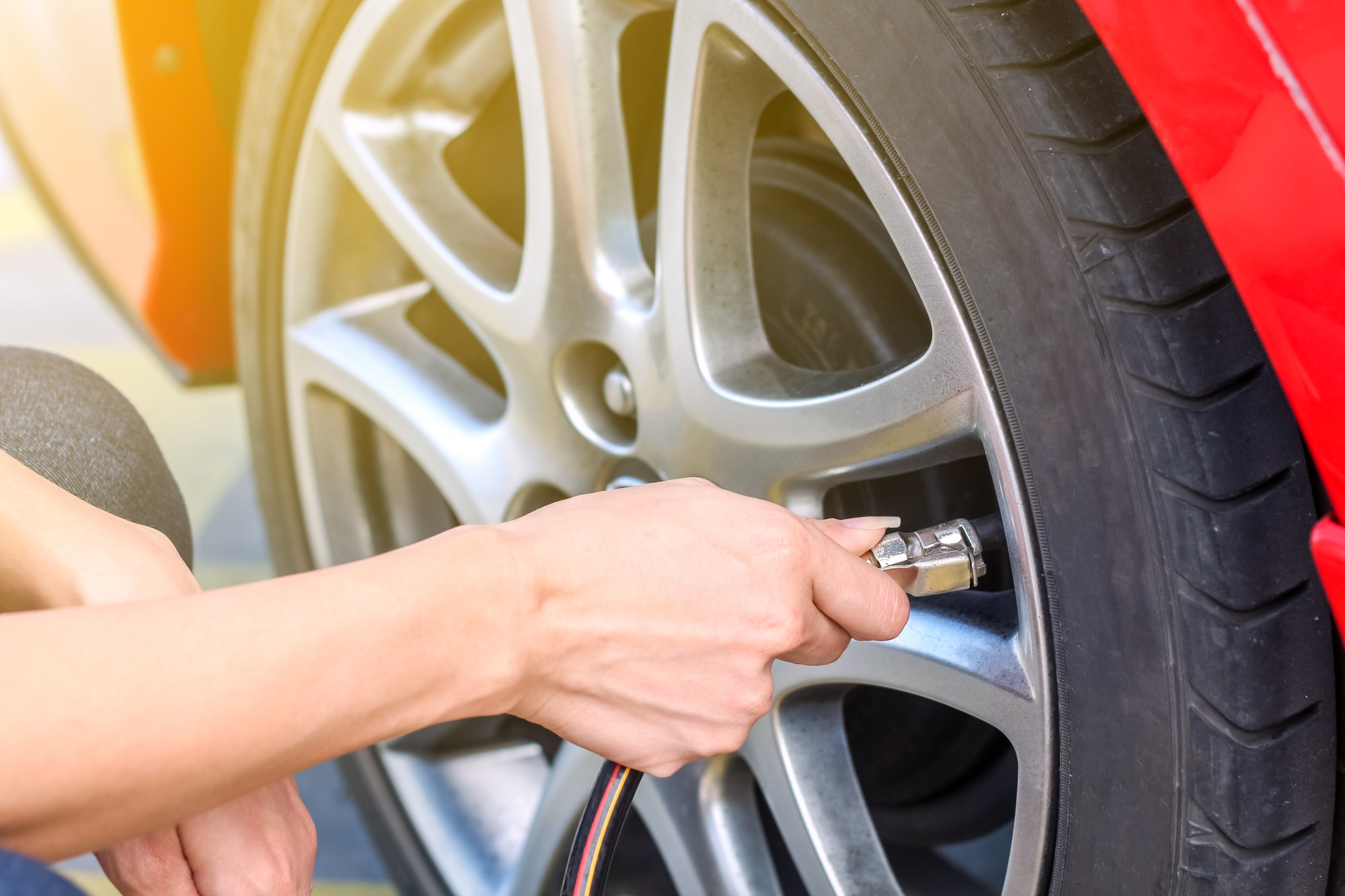Waking up in the morning to find one of your car tires partially deflated is one of those things that happen when you least expect it. It’s something we all know is going to happen eventually, but hold out hope that it’s an eventuality for the distant future.
If you’ve given your car a walk around to find that one or more of your tires is looking like it could use a top-up, don’t fret. It’s not as difficult a process as you might imagine, and can be done in just a couple of minutes.
Read on to find out how to put air in car tires easily and without fuss!
Why It’s Important To Maintain Pressure
Tires are capable of doing their job under the optimum level of pressure, but that doesn’t mean you should ignore them. Driving with tires under the stated recommended pressure means they are operating under conditions they aren’t designed for. Drive for too long with under-inflated tires and they’re likely to sustain increased wear and will need to be replaced much sooner.
You might also experience a loss of response in steering and general control. It’s dangerous to drive with tire pressure too low, as the increased wear can eventually lead to a blowout. Spontaneous catastrophic loss of air pressure is a common cause of road traffic accidents and is easily avoidable.
Police can also pull you over for any perceived safety issue, including if they spot dangerously low pressure in your tires. The last thing anyone wants to deal with is a confrontation with the police! Avoiding having to explain yourself to the boys in blue is worth the time to put air in car tires alone.
Diagnosing Low Tire Pressure
If you’re unsure whether or not you’re due for a top-up, there are a few ways to tell if it’s time to visit the air pump. It’s not always as easy as being able to tell at a glance. If you’ve gone a long time without checking pressure or can’t remember the last time you did, there’s no time like the present.
Other than the obvious squashed look of a badly deflated tire, you might notice your car is listing to one side. If you’re driving along and the handling of your vehicle feels different than usual, it could be worth stopping somewhere safe to check if the tires are the issue.
If you can’t diagnose the problem yourself, you might want to contact your car warranty provider. If you don’t have one, check out these CarShield reviews for a better idea of the kind of service you should expect from a great warranty service.
A tried and true method is to simply kick your wheel. A tire that’s perfectly inflated will ring with a satisfying rubbery twang, whereas a deflated tire won’t make any sound other than a dull thud. Either way, if you suspect it’s time to address the issue, you can find out for sure at your local gas station air pump.
How to Put Air in Car Tires
Putting air in car tires starts with access to an air pump. These are typically found as standard at local gas stations. You might need a handful of coins to get it running though, they’re not always available to operate free of charge but they’re not expensive.
Once you’ve located an air pump, remove the hose and bring it to the affected tire. Remove the cap from the air valve and put it somewhere safe, like in your pocket. The cap loves to escape even if you take your eye off it for a moment, and you need to replace it to stop detritus from entering once you’re finished.
With one hand push the nozzle of the air hose into the tire valve, this can sometimes require a little force. With your other hand, you operate the trigger on the hose, enabling precision during inflation. There’s usually a pressure gauge on the handle of the trigger you can watch to see exactly how much pressure you’re introducing, and when to stop.
Alternatives to Gas Station Pumps
It’s not always possible to make it to a gas station to pump up your tires. Maybe your local station does not come equipped with one, or you’d prefer not to rely on it. Self-sufficiency is always worth investing in if you’re the type who likes to cover all your bases.
Battery-operated air compressors are available for purchase and can be kept in your car. This means if you’re ever caught out and about with a badly deflated tire you can fix it on the spot. This prevents dangerous journeys with low air pressure to your nearest gas station, potentially avoiding disaster.
The process is the same as the gas pump, the only difference is you have to ensure they are charged up before use. Having a battery-operated air pump in the boot of your car can go a long way to assure peace of mind on long journeys or driving to places you’re unfamiliar with. These portable versions are also handy for bicycles and motorbikes, not just to fill air in car tires.
On The Road Again
Now you know how to put air in car tires, you should hopefully feel more confident on your commute. Confidence in your ability as a car owner to fix common issues like car tire inflation makes ownership a lot more enjoyable. Needless stress can often be allayed with a little know-how!
If this article answered your question, be sure to check out the rest of the blog for more answers to your car-related queries!

